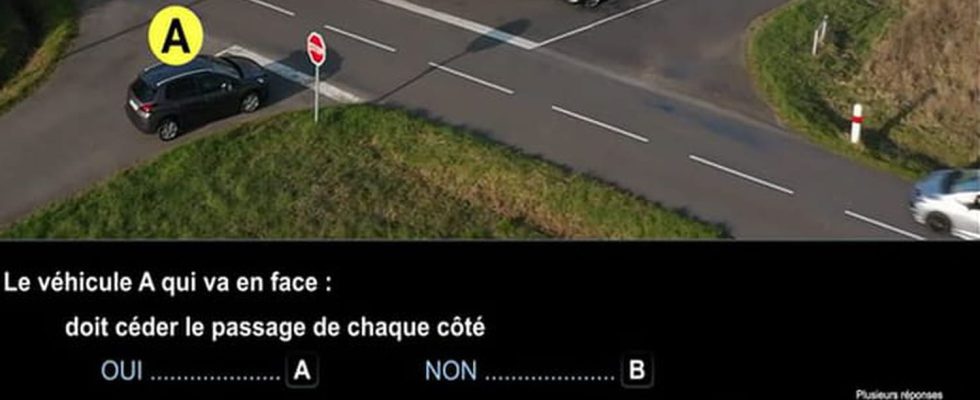Priority rules are not always easy to understand. Many drivers don’t know how to answer this question correctly.
The specificities of the Highway Code sometimes lead to situations that are difficult to understand. Who at the wheel has not asked themselves at least once the question of what they should do? Unless you have infused knowledge, probably not many people. It is most often when cars meet at intersections that the most complex cases arise. It must be said that when two roads cross, vehicles can arrive from four different directions at the same time. The presence of traffic lights often makes it possible to indicate which cars can drive and which must stop. But when there isn’t one, it can sometimes cause knots in the brain.
This is the case of the situation in this photo, taken from a video from the Road Safety question bank for the Highway Code exam. We see two cars facing each other, each of them stopped at a STOP, while a third arrives from the right. Two questions are then asked of the candidate. The first is whether vehicle A which wishes to go in front must give way on each side.
As he is stopped at a STOP, and there are no markings on the ground in either direction of traffic on the road he is about to cross, the answer is rather easy: YES he must give way on each side. Where it gets complicated is when learner drivers are asked if vehicle A has priority over vehicle B.

Unlike the first scenario, the two cars find themselves in front of a traffic sign, a STOP, forcing them to stop. The question is which of the two cars will have priority over the other when restarting. This scenario can disturb any driver; it is not uncommon when it occurs to see both motorists stopping for a long time as if to let the other have the first thought of the decision (and thus avoid making mistakes). However, if you looked closely at the image, one detail must have caught your attention. Vehicle B activated its turn signal to indicate that it intended to turn left. A detail that is very important…
To find the answer, it is necessary to imagine the two vehicles moving towards each other. As a reminder, vehicle A wants to go straight when vehicle B wants to turn to the left. The latter will therefore modify its trajectory to “cut” the path of vehicle A which will thus end up on its right. The rule of priority on the right, enshrined in the Highway Code, will therefore apply since the two cars this time no longer have any road markings in front of them. Car A having priority, it will go first, car B still having to wait before changing direction.
The rule of priority on the right is not the one that motorists master the most; you only have to see the behavior of certain drivers on the road to realize this. However, due to the risk of serious accidents that a refusal of priority on the right can cause, the penalty is severe. It sentences offenders to pay a fine of 135 euros (reduced to 90 in the event of rapid payment) and removes 4 points from their driving license. Enough to encourage you to carefully review your Highway Code.
